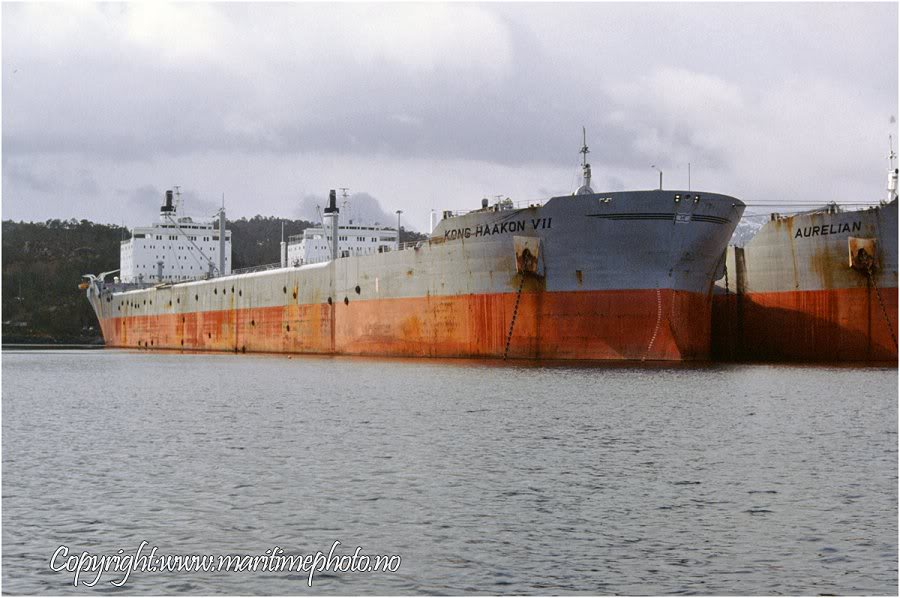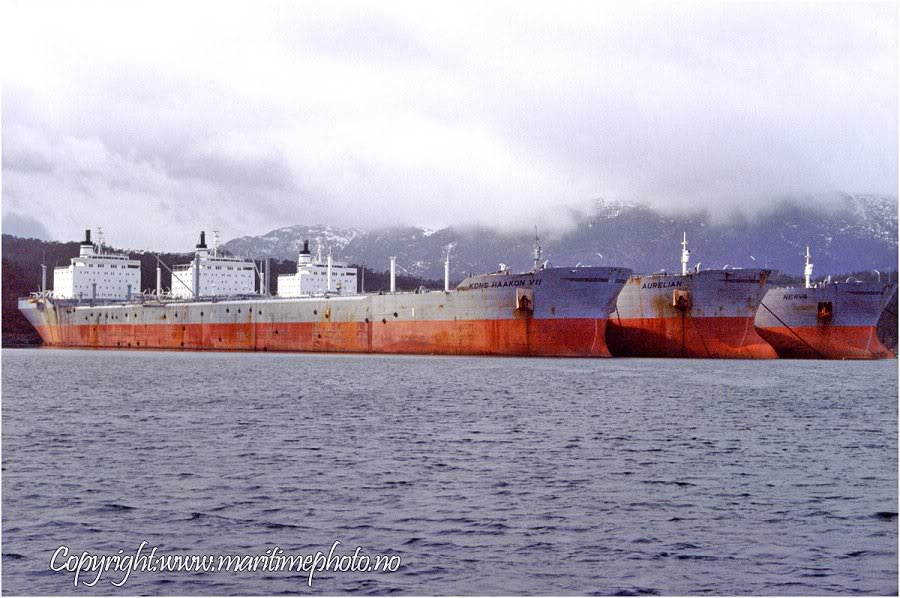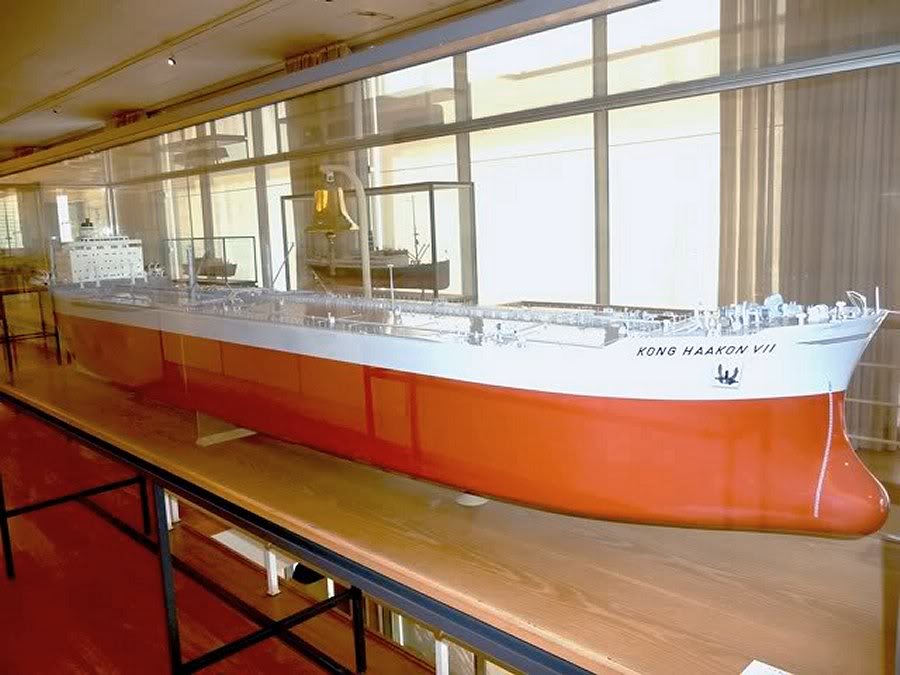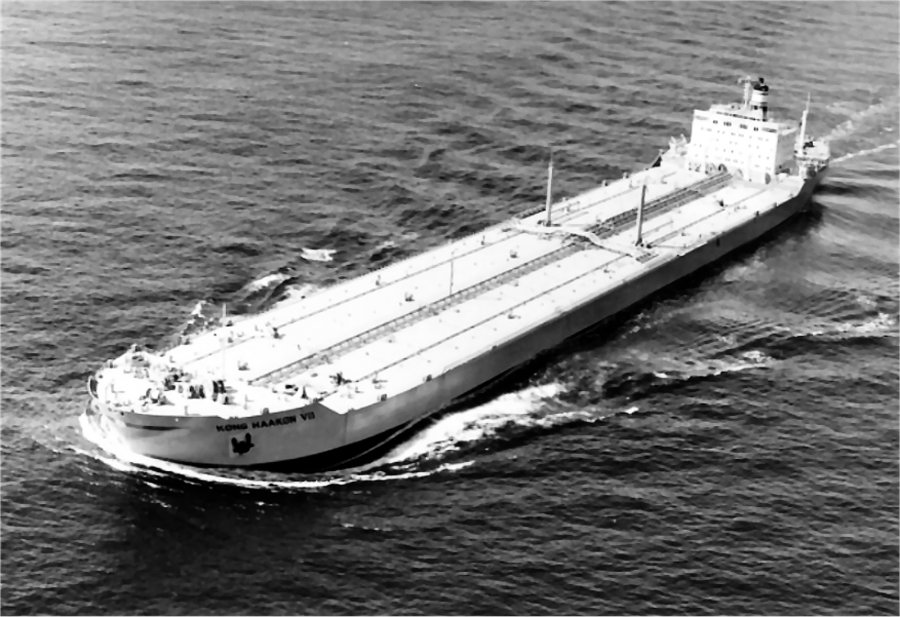Auke Visser's International Super Tankers | home
Kong Haakon VII
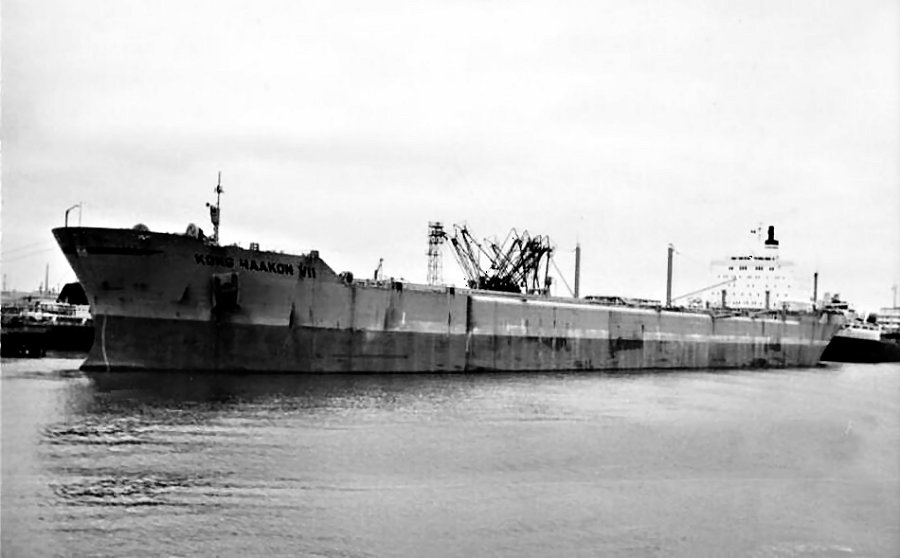
( Photo Copyright reserved )
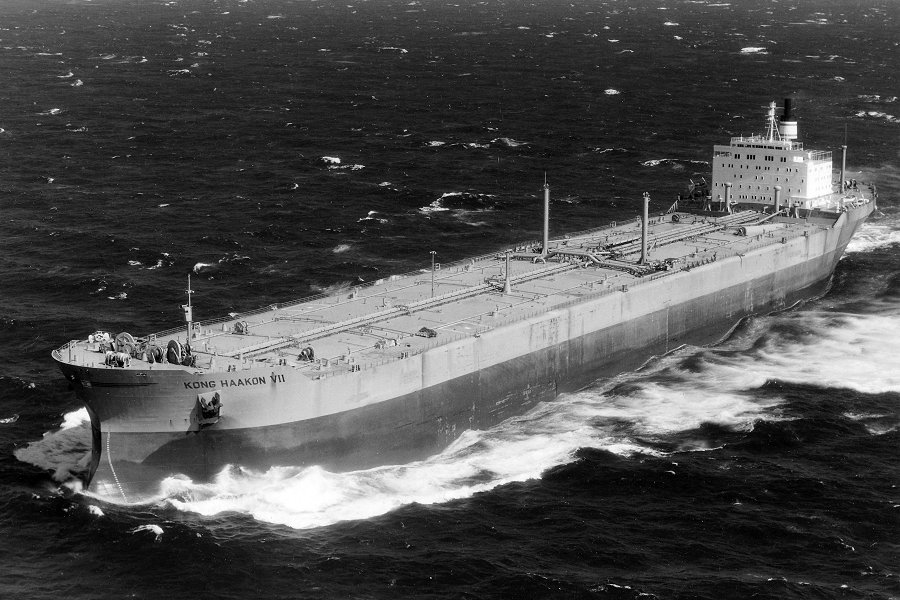
the biggest ship in the Norwegian Fleet.
( Photo Copyright Stord Verft )
Reksten-Tankers, laid up in a Norwegian Fjord in 1982.
From left to right, "Kong Haakon VII" and "Aurelain".
( Photo Copyright (www.maritimephoto.no), thanks to Bjørn Ottosen )
Reksten-Tankers, laid up in a Norwegian Fjord in 1982.
From left to right, "Kong Haakon VII", "Aurelain" and "Nerva".
( Photo Copyright (www.maritimephoto.no), thanks to Bjørn Ottosen )
Model of the "Kong Haakon VII".
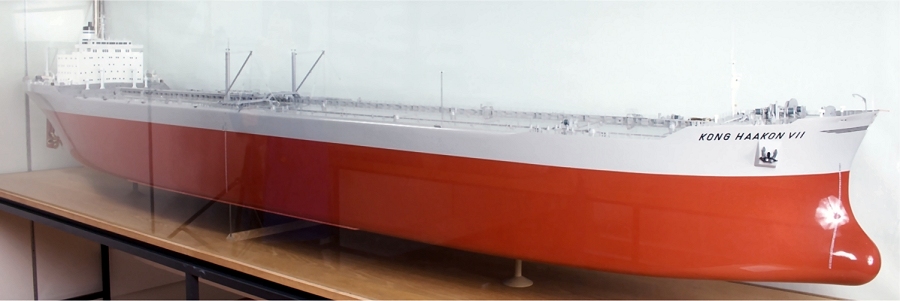
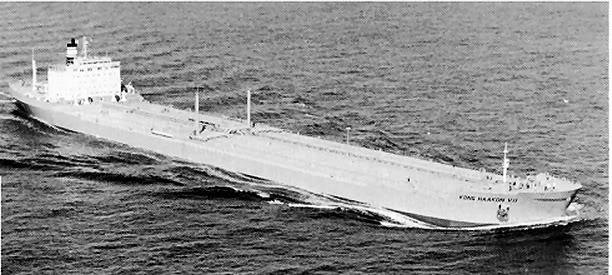
"Kong Haakon VII".
( Photo Copyright reserved )
( Photo collection Dag Bjerke )
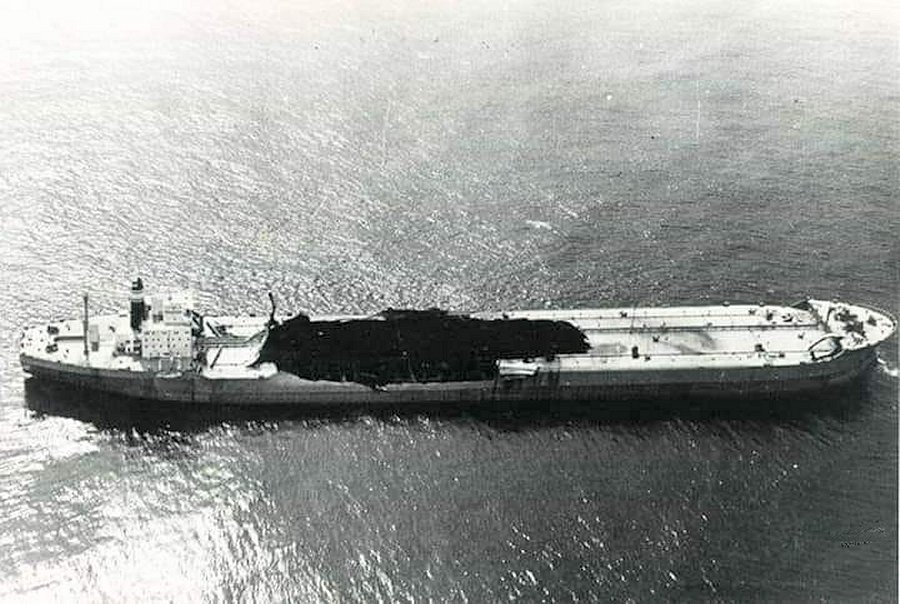
( Copyright reserved )
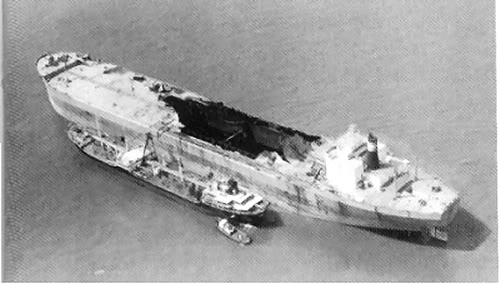
"Kong Haakon VII". See below for information.
( Copyright reserved )
The Miramar Ship Index for
|
KONG HAAKON VII
|
IDNo / IMO
|
6921672
|
Year
|
1969
|
Name
|
KONG HAAKON VII
|
Flag
|
NOR
|
Owner
|
Rederi A/S Julian
|
Type
|
Tanker
|
Tons
|
109422
|
DWT
|
222513
|
LOA
|
327,70
|
LPP
|
312,20
|
Beam
|
46,50
|
Dept
|
26,01
|
Draft
|
20,42
|
Machinery
|
1ST-16
|
kW
|
22691
|
ShipDesign
|
VLCC
|
Builder
|
Stord Verft A/S / Akers MV hull # 657, one hull section by Tangen Verft # 32
|
Yard
|
Leirvik
|
Yard No
|
657
|
Country built
|
NOR
|
Keel
|
????
|
Launch
|
01.04.1969
|
Completed
|
07.08.1969
|
Subsequent History
|
1976 KONG HAAKON VII - Rederi A/S Trajan
|
End
|
1984
|
Disposal Data
|
Scrapped at Kaohsiung 29.5.1984, work began 30.06.1984. [ By Chi Shun Hwa Steel Co. ]
|
Three of the world`s biggest tankers blow up within two weeks.
On 12th December 1969 the Marpessa, a new giant tanker of over 100,000 gross tons, was off Africa, returning to the Arabian Gulf in the Middle East to pick up her second cargo of crude oil. Suddenly, a massive xplosion occurred in one of her centre tanks, killing two of her crew and injuring others. Because of damage to the lines on deck that carried water, it was impossible to put out the fire. Marpessa began to flood, and with her bulkheads giving way under the enormous pressure of water, she sank on 15th December. When two other huge tankers suffered similar explosions in the same area within the next two weeks, Mactra and Kong Haakon VII, it was apparent that this was no coincidence.
All three tankers were cleaning their tanks at the time of the explosions. It was decided that the equipment used to wash the insides of the tanks with water had somehow ignited the dangerous mixture of air and gas left when the crude oil had been pumped out. Perhaps it was just a spark caused by metal grinding on metal, but one theory held that the massive tanks of these vessels could create their own weather conditions. It is possible that the equivalent of a thunderstorm had occurred, with catastrophic results. As a result, tank-cleaning equipment was modified. In addition, an inert gas - carbon dioxide from the ship`s engines, which will not support a fire - is pumped into the hold during tank cleaning.
In the last hours of 29 December 1969 there was an explosion on the tanker T/T "Kong Haakon VII" off the coast of Liberia that tore up the middle part of the deck of the ship. The tanker was a VLCC with 222513 DWT owned by the Norwegian shipping company A/S Julian (Hilmar Reksten).
In the port of Dakar, Senegal, the tanker was temporarily reinforced and in the end of March 1970 the T/T "Kong Haakon VII" left Dakar port for further journey to Lisnave shipyard in Portugal. The ship arrived at the shipyard 2 April where work to replace the middle part of the ship began. After 8 intensive months the middle part of the T/T "Kong Haakon VII" was replaced, and 2 December the ship was handed over to the owner Hilmar Reksten. A few days later the T/T "Kong Haakon VII" was on her way to the Persian Gulf for a new cargo of crude oil.
The explosion onboard the T/T "Kong Haakon VII" was the last of three outside West Africa in 17 days. First it was the tanker "Marpessa" that exploded and sank. The tanker "Mactra" got an explosion just hours before T/ T "King Haakon VII". Investigations concluded it was formed static electricity during cleaning the tanks of the vessels, which ignited the gas in the tanks. This led to the introduction of inert gas system to avoid static electricity while cleaning the ship tanks.
|
